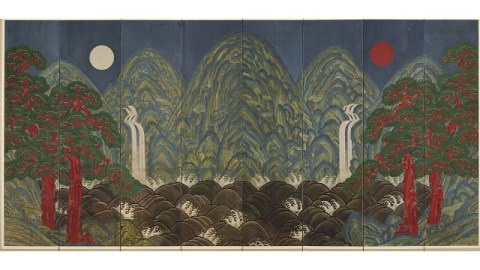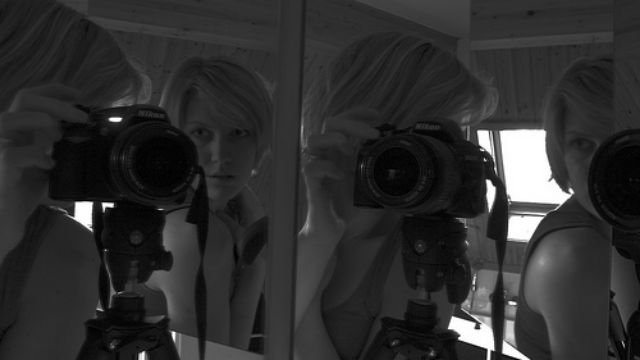Discovering Korea’s “Hermit Kingdom” Through Its Art

The Joseon Dynasty ruled over Korea for more than half a millennium, stretching from 1392, when horses were still the main means of travel, to 1910, the dawn of the age of flight. Overshadowed (and sometimes invaded) by neighboring China and Japan, Korea maintained its unique culture and arts until the late 19th century, when the West finally made inroads into what became known as the “hermit kingdom.” A new, unprecedented exhibition at the Philadelphia Museum of Art titled Treasures from Korea: Arts and Culture of the Joseon Dynasty, 1392–1910 retells the story of that dynasty through more than 150 works, including many Korean national treasures that have never before left their native land. Walking among the remnants of people steeped in the simplicity of Neo-Confucianism yet still marked by the grandeur of kings, you feel yourself transported not just to a different place and time but to a whole new state of being. This rediscovery of Korea’s “hermit kingdom” through its art will bring you out of your own cultural shell.
The Joseon Dynasty took over from the Goryeo Dynasty, which had itself ruled Korea for nearly half a millennium since 918. The Goryeo Dynasty revered Buddhism, whereas the Joseon embraced a brand of Neo-Confucianism that shunned the mystical elements of Daoism and Buddhism in favor of a more secular philosophy upon which to base their society. “In aesthetic terms,” Insoo Cho writes in the exhibition catalog, “Goryeo art tends toward the detailed and extravagant, the elaborate and complex; in contrast, Joseon art is loose and modest, elegant and simple.” Confucian ideas influenced the actions and visual landscape of everyone from the royal family to the lowliest peasant. “Thus,” Cho continues, “it is no overstatement to say that in order to understand Korean art, it must be viewed through the filter of Confucianism.” If you thought you understood Asian art or Confucianism before, Treasures from Korea will still school you through its well-curated series of visual lessons.
Neo-Confucianism covered everything in the Joseon Dynasty from cradle to grave. Simple but beautifully constructed placenta jars holding the afterbirth of princes would be buried in places chosen according to a form of geomancy similar to Chinese feng shui. The exhibition includes several of these placenta jars, which seem far too plain to hold the stuff of royalty. But like the also geomancy-chosen royal tombs, for-chosen-eyes-only stylized royal portraits, and even royal furniture, Joseon Dynasty art embodies the tension between, as Cho puts it, “the conservatism of Confucianism” and “the royal court’s pride in having maintained its hold on power for so long.” Making art the same simple way it had been made for generations thus became a way of showing off.
For example, even the decorative screens that would appear everywhere from the royal court to everyday homes carry great significance carried across the generations. The Sun, Moon, and Five Peaks (example shown above from the 19th century) features the sun and moon symbolizing the yin and yang or spiritual “parents” of all humanity; the five mountain peaks symbolizing the five elements of wood, fire, earth, metal, and water; cascading water symbolizing the constant circulation of those five elements; and two bookending pine trees symbolizing the ever-flourishing, never-ending royal lineage. Perhaps the most fascinating feature of Treasures from Korea is that you can see one of the royal protocol books opened to the page specifying exactly how such screens are to be painted, take a few steps to see an actual screen, and then take a few more steps to see another screen commemorating a royal banquet in exquisite detail, including participants bowing before an empty throne in which the ruler’s person (which could only be reproduced under strict conditions) is represented by the Sun, Moon, and Five Peaks. The sometimes inaccessible world of Asian art becomes clear and even inviting through this step-by-step approach. It’s funny that these screens, which were designed to be barriers, help break down cultural barriers. Elsewhere in the exhibition you can see more screens featuring peony blossoms (symbolizing fertility and honor) and the self-explanatory 10 longevity symbols. Helpful touch screens at either end of the 10 longevity symbols screens not only tell you what the cranes, tortoises, peaches, and even fungi mean, but also throw in some amusing animation for the kids (or childlike adults, yours truly included).
As rigid as this society seems sometimes, especially in contrast to our own free-wheeling times, I still felt I could connect with the people who made, used, and sometimes appear in these works. As Hongkyung Kim points out in the catalog, Neo-Confucianism promoted the idea of the country as one big family in which “each member within the family would assume their own reciprocal responsibilities,” starting with “the eldest son of this figurative family,” the Joseon king. Even the king could be called onto the carpet (actually, the “classic mat”) by scholar-officials charged with maintaining a “surveillance system” that held even the royals accountable to Neo-Confucian standards in the name of keeping the family peace. Knowing how this relationship network worked, I saw the calligraphic and poetic works of 18th century scholar-king King Jeongjo not as royal playthings but as real attempts at contributing to the culture of his people. On the other side of the royal—scholar-official equation, the Portrait of Yi Jae shows the face of the author of one of the major Joseon rule books of the early 18th century, just before King Jeongjo’s reign. Although his simple top coat is a stylized white with black trim, the unknown artist shaded the scholar’s face tenderly to capture beautifully the combination of stern intellectual rigor and deep love for the belief system that held his civilization together.
In the midst of all that structure and stability, Treasures from Korea still manages to convey the slow of arc of change over the half millennium it covers, specifically the increasing influence of Buddhism and the modernizing incursion of the West. Although Buddhism existed in Korea since traveling there in the 4th century, the Joseon Dynasty initially diminished the role Buddhism played in government, leaving the religion to coexist peacefully with Neo-Confucianism as long as it kept its distance. However, “[i]n the latter half of the dynasty,” Unsok Song relates in the catalog, “it was the Buddhist faithful among the masses who provided the foundation for the emergence of a new aesthetic in Buddhist sculpture and painting.” Song credits Buddhism’s capacity “to soothe the minds and hearts of the people suffering through the chaos of war (and resulting famine)” as the gateway for greater tolerance and even royal patronage of Buddhist works of art, many of which are on display in the exhibition, ranging from gilded statues of the Buddha to large-scale hanging scrolls filled with Buddhist figures. Kim traces how the monolithic Neo-Confucian system supported by the elites slowly eroded as a “commoner culture” marked by folk art and faith in a mixture of Buddhism and folk tales heralded the end of the Joseon Dynasty.
However, it was the West’s invasion into hermetic Korea in the late 19th that finally ended the Joseon Dynasty. After walking through centuries of art marked by ritual and royal stability, followed by a brief Buddhist interlude, you find yourself turning a corner and coming face to face with a Western-style military uniform with Korean touches that says more than any words how the days of the courtier’s brightly colored and highly respected top coat were no more. “The influx of Western scientific and utilitarian thinking shook the foundations of Confucian thought, which had informed the nation for hundreds of years” Dongsoo Moon writes of this final stage. Initially, the Joseon Dynasty tried to adapt to the West by calling for a blend of “Eastern Ways and Western Machines” that would give them all the benefits of modernity while still allowing them to retain their ancient position of power. The material culture of the West, however, overpowered the simple life of Confucianism by sheer materialist lust for the novelty of Western luxury goods. Perhaps the coup de grace for the Joseon rulers came in the form of photography, which both replaced the previous rules for royal portraiture and allowed for mass distribution of the king’s image, which was now more visibly human than unimaginably divine. The exhibition sets up several late royal portraits beside the photographs used by the artists which demonstrates the skill of the artists but also reminds you that photographic realism was never the point.
Kim Eun-ho’s Portrait of Yi Gyu-sang neatly encapsulates this final turning point of the Joseon Dynasty. Yi Gyu-sang, a military officer, sits with downcast eyes in a Joseon traditional military uniform augmented with two Western-style medals pinned to his chest. The realism of the artist’s depiction of the officer’s face makes him look more tired than commanding, as if he were resigned to the changing of the guard in Korean life from the stylized, rule-heavy Confucianism of the past to the more chaotic world of the 20th century that would bring seemingly endless invasions and wars to Korea as it became another pawn in the Cold War chess match. Treasures from Korea: Arts and Culture of the Joseon Dynasty, 1392–1910, which runs at the Philadelphia Museum of Art through May 26, 2014, before moving on to the Los Angeles County Museum of Art and the Museum of Fine Arts, Houston, transports you to not just a different country but to an entirely different way of thinking about culture and society and how community and individuality act as the yin and yang of living together. Treasures from Korea reminds us that for all we gain from modernity’s personalized, hermetic, iPhone bubble, we should never forget the lost treasures of being part of the larger human family.
[Image:Sun, Moon, and Five Peaks, Artist/maker unknown. Joseon Dynasty (1392-1910), 19th century. Eight-fold screen; colors on paper, 82 11/16 × 217 7/16 inches (210 × 552.3 cm). Private Collection.]
[Many thanks to the Philadelphia Museum of Art for providing me with the image above from, the catalog to, press materials for, and a press pass to see the exhibition Treasures from Korea: Arts and Culture of the Joseon Dynasty, 1392–1910, which runs through May 26, 2014.]





